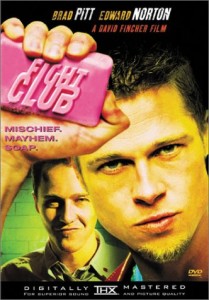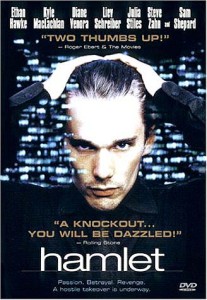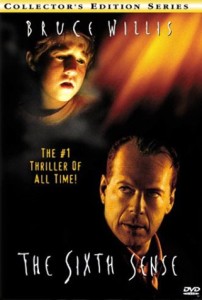NEEDED: ‘GRAND’ ARGUMENTS BENEATH YOUR CONFLICTS
 AS I’VE WRITTEN elsewhere, there is a HUGE difference between mere fleeting “tales” and actual enduring “stories.”
AS I’VE WRITTEN elsewhere, there is a HUGE difference between mere fleeting “tales” and actual enduring “stories.”
Yet far too many writers, producers and even released films end up demonstrating a frustrating ignorance (or careless nonchalance) toward this difference — with much money and talent wasted on passing projects almost certain to be only “here today and gone tomorrow.”
Fact is, after a movie’s opening weekend and press push is past, mass audiences will always tend to toss aside or disregard any production that is only a chain-of-incidents “tale.”
The reason is, such tales have little “meat” to chew on, and little or nothing to evoke re-watching or telling friends about.
Meanwhile, “stories” offer opportunities for meaning and emotional resonance that extend far beyond the initial viewing, because they possess all the needed “under-the-hood” meaning-makers that tales do not.
To be clear, I define a “tale” as merely a statement — a linear progression from one event to the next, culminating in one singular outcome with no clear valuation of that outcome. For example: “The king dies, then the king’s wife and son die.”
Yes, all three of these events could contain some drama. But in this version, do the events contain any apparent meaning? No.
By contrast, a story is a grand argument — a chain of logical and emotional reasonings aimed at proving that a particular approach to solving this story’s problem is EITHER a good one, OR a bad one. Complete stories argue their points in such a way that audiences find it quite difficult to reject or refute the author’s thesis, core meaning and outcome.
So here’s a “story” version of the above tale:
“The king’s ghost demands vengeance against his murderous brother, but the king’s indecisive son can’t bring himself to do the deed until several more people are stabbed, poisoned, beheaded or driven insane, so that the prince’s ultimate avenging of his father’s death only happens as the prince and his mother are both dying in despair, and with only one friend remaining alive to pass on the tragic lessons against over-thinking, indecision and naivete.”
An ultra-quick synopsis of Shakespeare’s Hamlet story, to be sure! But clearly more meaning-filled than the “tale” version with which I started. See, the tale version is certain to be quickly forgotten because of the plethora of exceptions inherent to its simplistic form. There is no argument being made, no discernible viewpoint or interpretation to it all, so why remember or retell it?
 Yet Hamlet, despite being a severe tragedy, is still one of the most-frequently produced and performed works in the world’s dramatic canon — because beneath all its sword fights and soliloquies, it’s also got a great “grand argument” going on.
Yet Hamlet, despite being a severe tragedy, is still one of the most-frequently produced and performed works in the world’s dramatic canon — because beneath all its sword fights and soliloquies, it’s also got a great “grand argument” going on.
Stories as “arguments”
In court cases, both the prosecution and defense offer “arguments,” with each side’s ultimate goal being to deliver a compelling version of the “truth” that the jury will “buy” — each attorney wants to deliver a specific meaning to the jury/audience that will turn the jury in his/her favor.
And it’s a statistical fact that far too often, the attorney who uses the evidence to present the best “story” is the one who wins the jury/audience’s affirmation, even if the evidence in the “tale” is largely circumstantial.
That is, a winning attorney must not just get the jury to remember a certain sequence of events or pieces of evidence. Rather, a winning attorney must get the jury to hang onto the specific emotional interpretation of the events and evidence that best aids his/her “side” of the overall argument.
An attorney who only reminds juries of events and evidence pieces is telling a “tale.” An attorney who gets juries to wrap certain meanings and emotions around his/her version of the events and exhibits is getting them to believe a “story.” And that attorney is likely to get chosen on far more cases than the other!
This is where the power of stories lies, and it’s why we all need to learn better how to produce stories rather than tales.
More evidence
The following examples (as discussed in one of Jim Hull’s many fine analyses at NarrativeFirst.com) show that enduring films are the end result of a filmmaker trying to argue a particular meaning — even while throwing in ample counter-arguments so the “case” seems well-rounded and thorough, without any “blind spots.”
For instance, one cannot possibly come away from The Shawshank Redemption without getting the authors’ clear message that no matter the situation, there is always hope.
 That’s what Stephen King and Frank Darabont said, elsewhere, that they were intending to communicate through this particular story, and they certainly succeeded (even though there clearly are several hopeless moments in the story before their theme finally, fully prevails).
That’s what Stephen King and Frank Darabont said, elsewhere, that they were intending to communicate through this particular story, and they certainly succeeded (even though there clearly are several hopeless moments in the story before their theme finally, fully prevails).
Likewise, one can’t watch Fight Club and not feel, at least for a moment, that anarchy and self-destruction might sometimes be an effective solution to one’s problems.
Fight Club writer-director David Fincher has certainly proclaimed this negative view of life. But despite that negativity, his designing of the film’s persuasive “argument” as he did made Fight Club a DVD favorite among many 20-somethings of the early 2000s.
At the other end of the spectrum, Walt Disney’s classic Pinocchio argues that one should simply do the right thing, despite the actions of any surrounding wrongdoers.
Yes, Pinocchio is handled in a much-more-obvious way than Fight Club. But the story of the lying marionette who becomes an honest boy is no less effective than the one of two nihilistic young men sharing the same body. Both films are about something, without being too heavy-handed in that “aboutness.”
Finally, one of the most-powerful examples of how stories meaningfully work on all levels is The Sixth Sense — especially its stunning conclusion.
Connecting the ‘personal’ and the ‘external’
If you recall from the movie, a young boy named Cole kept having visions of “dead people,” and several adults attempted to make these visions stop. But it’s ultimately revealed that there was much more to Cole’s visions than everyone thought.
Throughout, child psychologist Malcolm Crowe has been fooling himself (as many Main Characters do) into believing that what he sees and perceives as reality is, in fact, actually real. And it’s only by working his way through the story and allowing Cole’s influence into his life that Malcolm finally understands what really has been going on.
 The truly great thing about this story is that its perspective on “perception” is reflected not only in Malcolm’s personal throughline/story thread, but also in the larger “external” story about a troubling boy and his even-more-troubling visions.
The truly great thing about this story is that its perspective on “perception” is reflected not only in Malcolm’s personal throughline/story thread, but also in the larger “external” story about a troubling boy and his even-more-troubling visions.
Many of the characters in the film (Malcolm included) perceive Cole’s outlandish actions as symptomatic of a heavily disturbed mental psychosis. They believe Cole must be a victim of some sort of child abuse, or that he’s acting out because his father is gone. He couldn’t possibly be seeing real spirits who are still lingering.
As it turns out, everyone else is dead wrong.
The real reason stories exist
See, everyone else’s error of perception — the same error Malcolm experiences personally — is shown to be a self-deception, an immortality-denying falsehood. Overcoming this deceptive-perception problem is the focus of the story, and the ultimate purpose of the film.
So when people talk about the “importance of story,” of creating a narrative that matters, what they’re really looking for is some way of bringing meaning into the piece. Structure exists to create this meaning.
And mind you, this message/purpose has to be discussed and sharpened from the beginning of development. It can’t be a “jumped-to” conclusion tacked on toward the end of the writing process, and the specifics of it can’t be tied to some myopic, inflexible, “one-size-fits-all” story paradigm that is actually quite limited and one-note.
So be careful which “story gurus” you trust…
Finally, The Shawshank Redemption, Fight Club, Pinocchio, The Sixth Sense — all these films were carefully designed with an overall purpose in mind (and a distinctly different purpose or message for each story).
Whether it is the benefits of hope when there is no hope, or the “healing” power of anarchy, or the importance of doing the right thing no matter what, or the deception that perception can bring, each film tries to say something the authors felt was very important.
Tales, on the other hand, are usually the unfortunate result of an author unsure of what s/he wants to say, or confused as to how proper story structure can aid in his/her writing toward a meaningful package.
In fact, the argument made in The Sixth Sense can be applied to writing as much as to deceased people who don’t know they’re really dead. People should look beyond what they see, what they perceive to be the truth about storytelling, and really dig down deep to the reality that actually exists.
Because “story” structures (unlike “tales”) communicate the author’s argument in logically and emotionally compelling ways which make that argument persuasive and difficult to refute.
Beneath the moment-by-moment conflicts, they have “grand-argument” foundations that make them endure.

